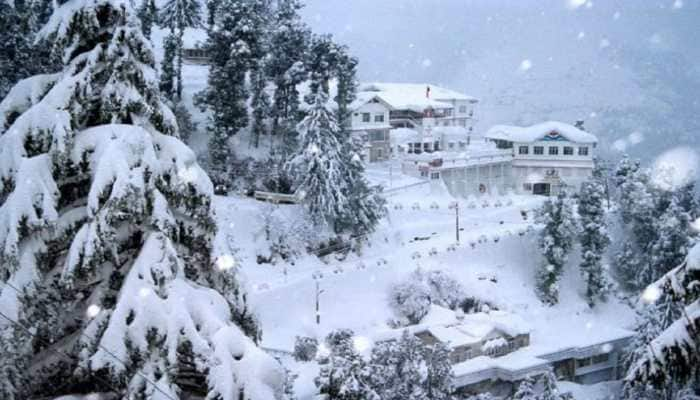American artist fuses Indian ragas, art
James McGarrell, one of America`s best-known post-war painters, is in India for his first solo Asian show with a collection of 36 paintings - "Astronomies and Pleasures, A New Ragamala" - influenced by Indian classical music and the traditions of Rajput miniature art.
Trending Photos
)
New Delhi, Nov 16: James McGarrell, one of America`s best-known post-war painters, is in India for his first solo Asian show with a collection of 36 paintings - "Astronomies and Pleasures, A New Ragamala" - influenced by Indian classical music and the traditions of Rajput miniature art. The paintings, mostly 11X15 inch frames of water colour and gouache in bright shades of orange, yellow, red, brown, blue and green with Rajput-style borders, are each named after an Indian raga - beginning with the morning Raga Bhairavi and ending with Raga Kedar.
The 21-day exhibition at the Religare Arts-I gallery in the capital opened Saturday.
McGarrell, born in Indianapolis in 1930, began exhibiting with leading post-war painters in 1955. In 1959, he became one of the youngest artists to be included in the "New Images of the Modern Man", a controversial exhibition of figurative paintings at the Museum of Modern Art in New York that was seen as a protest against "abstract expressionism of the day". It was trashed by critics as "hideous" because of its contemporary figurative elements.
McGarrell exhibited his works along with post-war heavyweights like Francis Bacon at the show. He has over the years carved a niche for himself in the American art scenario.
His art features as permanent exhibits at The Metropolitan Museum, the Museum of Modern Art, the Sculpture Garden in Washington, Chicago Art Institute and in almost all state museums across the US.
McGarrell, who started as a figurative painter, changed his style to impressionism and abstraction early this decade.
"Ragamala, the series on which I started work last year in February when I was in India on a residency programme at Sanskriti, is the culmination my stylistic transformation from figures to abstract impressions. But my work has passed through many phases," McGarrell said in an interview.
"I began these paintings to express what I saw around me and fused them with my inner inventions. Ragamala is my collection of India impressions," he said.
The artist completed the first 20 paintings in India and took them back to his studio in Vermont, where he added another 16.
While the borders of the paintings are culled from Rajput miniatures, of which McGarrell has a small collection, the content has been inspired by his love for Indian music.
"For a long time, I have been listening to Pandit Ravi Shankar, Ali Akbar Khan, jazz, western classical and European Chamber Music. They occur in my paintings in coloured patterns," he said.
McGarrell`s adviser was Alka Pandey, the consultant arts advisor and curator, Visual Arts Gallery at the India Habitat Centre.
"She helped me understand morning, spring and evening ragas," the artist said.
The artist, principally an oil painter, chose gouache, the technique common to Rajasthan paintings, because it creates landscape kind of spaces that are not specific.
"I love the play between the borders of my ragamala and the central theme as they overlap and spill into each other. The borders of all the 36 paintings are different," McGarrell said.
A preview frame titled "Gaud Malhar" stood out for its streaks of lightning that bolted across a red sky.
"Indians have very stylized lightning," said the artist, who has been influenced by European masters Matisse and Cezanne.
McGarrell consciously cultivates dissonance in his art. "Sometimes, I look at my work and feel that it needs a shock of yellow. But I make sure that the colour does not sit on the surface but spreads out evenly across the work to gel with it," McGarrell said.
The artist, whose colours were earlier muted, switched to high-intensity colours during the 1960s.
The artist, who has lived through the war years, feels that the most important thing that World War II taught American painters was to strike out on their own and not look to Europe for trends, which was still stuck on Picasso.
In 1995, he was conferred the Jimmy Ernst Award for Lifetime Achievement from the American Academy of Arts and Letters and in 2008, he was awarded the Oscar Williams and Gene Derwood Prize.
IANS
Stay informed on all the latest news, real-time breaking news updates, and follow all the important headlines in india news and world News on Zee News.
Advertisement
Live Tv
Advertisement







)
)
)
)
)
)
)
)
)
)
